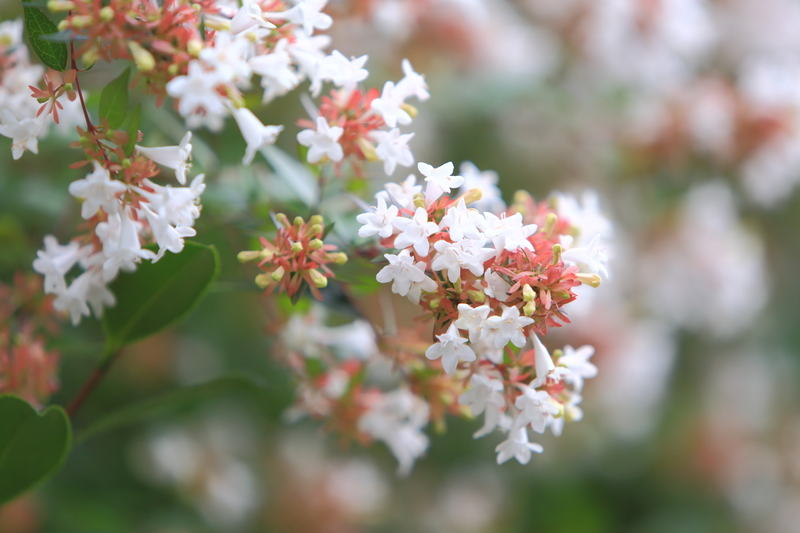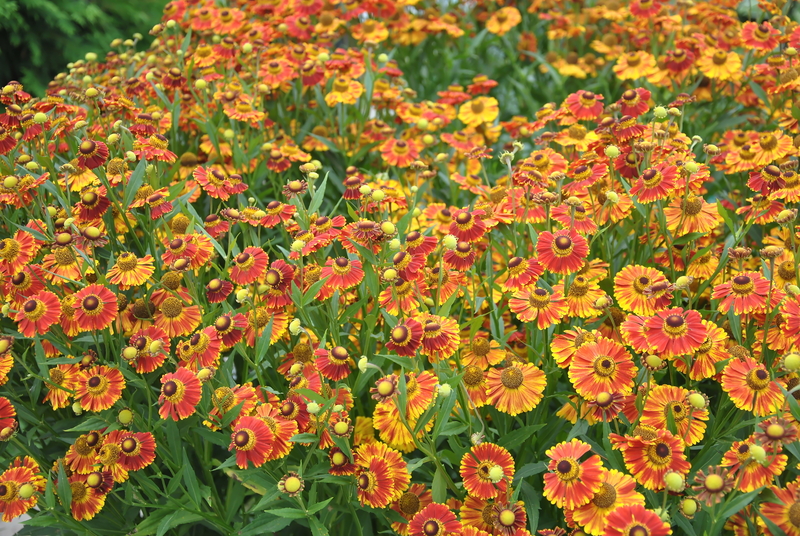Craft a Garden That Fosters Fun and Learning for Kids
Posted on 26/06/2025
Craft a Garden That Fosters Fun and Learning for Kids
Gardening isn't just an engaging outdoor activity--it's also a powerful tool for childhood development. When you craft a garden that fosters fun and learning for kids, you're sowing far more than seeds. You're nurturing curiosity, responsibility, and a lifelong appreciation for nature.

Why Create a Kid-Friendly Learning Garden?
- Promotes Active, Healthy Living: Gardening gets kids moving and outdoors, encouraging physical activity and time in fresh air.
- Sparks Curiosity and Discovery: A learning garden exposes children to fascinating plant cycles, pollinators, and ecosystems.
- Teaches Responsibility and Patience: Tending to plants helps kids develop consistency and delayed gratification.
- Strengthens Family Bonds: Collaborative gardening projects deepen connections and communication.
Designing a playful and educational garden doesn't require a green thumb or a huge yard. Whether you have a sprawling backyard or a petite patio, here's how you can craft a garden space that will entertain, teach, and inspire your children.
Plan Your Garden With Kids: Start With Inspiration
Bringing kids into the planning phase builds anticipation and ensures the space reflects their interests. Ask questions like:
- What do you want to grow? (Flowers, herbs, fruits, veggies?)
- What would make the garden fun for you? (A hiding spot, a fairy house, a mud kitchen?)
- What are your favorite colors and scents?
Encourage children to draw their ideal garden or create a simple collage from magazines for inspiration. Their ideas can become blueprints for your project.
Choose a Safe and Accessible Location
- Pick a spot with sunlight (most plants need 6+ hours daily).
- Ensure the area is visible from the house for supervision.
- Keep pathways wide and surfaces even for small feet.
- If using containers or raised beds, ensure they're stable and reachable.
Design Elements That Foster Fun and Learning
- Raised Beds or Vertical Gardens: Perfect for small yards, patios, or making plants accessible to children.
- Colorful Pathways: Create inviting spaces with stepping stones, painted rocks, or mosaics.
- Exploration Zones: Dedicate an area to sensory or themed gardens, such as butterfly or pizza gardens.
- Shady Retreats: Erect a simple teepee or arbor covered in beans or vines as a play den.
- Water Features: A birdbath or small pond draws wildlife and sparks curiosity about aquatic life.
Best Plants to Grow in a Children's Play and Learning Garden
The right plant selection makes your learning garden for kids truly captivating. Try these:
- Fast-Growing Vegetables: Radishes, lettuce, peas, or beans give a quick, rewarding harvest.
- Easy Flowers: Marigolds, sunflowers, nasturtiums, and zinnias offer bright colors and minimal fuss.
- Herbs for the Senses: Mint, basil, chives, and lavender are fun to taste and sniff.
- Edible Berries: Strawberries, blueberries, and raspberries provide snacking and observation opportunities.
- Butterfly and Bee Plants: Milkweed, coneflowers, and cosmos will attract pollinators and teach ecology.
Tip: Opt for non-toxic plants to keep your play garden safe for curious hands (and mouths).
Making the Garden a Learning Playground
Plant the Seeds of Science and Math
Use gardening tasks to explore STEM topics:
- Measurement: Track plant heights or garden bed dimensions.
- Charting Growth: Keep a log or draw pictures of plant progress.
- Experimentation: Compare how plants grow with different amounts of sun, water, or soil types.
- Counting and Sorting: Use seeds and harvested produce for hands-on math practice.
Cultivate Observation and Environmental Responsibility
- Create a nature journal to record insects, birds, and weather changes.
- Teach composting with a simple bin for veggie scraps and leaves.
- Discuss the importance of pollinators and how to protect them.
Fun Features to Add to a Kid-Centered Learning Garden
- Mud Kitchen: Encourage creative, messy play with old pots, pans, and utensils.
- Fairy or Dino Garden: Decorate a corner with miniature figurines, houses, or dinosaurs.
- Outdoor Chalkboard: Mount a waterproof board for drawing or planning crops.
- Garden Art: Make painted plant markers, wind chimes, or mosaics for a personal touch.
- Secret Paths and Tunnels: Grow bean poles or tall sunflowers in a circle to craft a living fort.
Garden Games and Learning Activities
- Scavenger hunts (Find a red flower, a smooth rock, or a buzzing bee).
- Plant relay races for planting seeds or watering evenly.
- Sensory guessing games (What's that smell? What's that texture?).
- Storytime or reading sessions in a shady nook.
All-Season Engagement: Keeping the Kids' Garden Active Year-Round
Even in colder months, you can maintain a children's learning garden atmosphere:
- Spring: Start seeds indoors in recycled containers; enjoy searching for worms and sprouts.
- Summer: Harvest vegetables, have picnics among the plants, and observe pollinators.
- Autumn: Rake leaves to create compost, plant garlic bulbs, and build bug hotels.
- Winter: Decorate trees with bird-friendly snacks, try ice art, and plan next year's garden together.
Tips for a Safe and Successful Kids' Garden
- Use child-sized tools for easier handling and fewer accidents.
- Check for toxic plants--avoid foxglove, oleander, or daffodil bulbs.
- Supervise children--especially around water or chemicals.
- Install fencing if your garden is near a street or pool.
- Store sharp or heavy tools safely and teach proper use.
How to Involve Children of Every Age Group
- Preschoolers: Enjoy sensory bins filled with soil, beans, and safe gardening toys; help sprinkle seeds and water plants.
- Early Elementary: Love hands-on projects, simple experiments, and counting harvests.
- Older Kids: Take on planning layouts, caring for delicate plants, or leading nature studies.
- Teens: Can design, build, maintain, and even market produce or flowers for charity or fun.
Garden Project Ideas to Teach and Entertain
- Grow a Salad or Pizza Garden: Plant cherry tomatoes, basil, lettuce, and peppers to harvest for meals.
- Butterfly Paradise: Cultivate milkweed, dill, and zinnias; observe caterpillars and butterflies through the seasons.
- Sunflower Maze: Create paths through tall sunflowers for imaginative play and maze games.
- Pollinator Bath: Install shallow dishes with marbles for bees and butterflies to drink safely.
Mistakes to Avoid When Crafting a Kids' Learning Garden
- Overcomplicating the design: Keep it simple--children enjoy open space and accessible plants.
- Planting all at once: Stagger planting for ongoing freshness and continual excitement.
- Expecting perfection: Gardens are learning zones--embrace mild messiness and "failures" as part of the process.
- Doing everything for them: Allow kids to make choices, dig, plant, and experiment with some independence.
Encourage Creativity and Ownership
Let children name their garden beds, paint signs, or keep records of what's growing. Ownership boosts pride and curiosity. Keep a camera handy to document their adventures (and growth, both garden and personal!).

Resources for Crafting Gardens That Foster Fun and Learning
- Local libraries for books on children's gardening and ecology.
- Kid-friendly garden kits with seeds and instructions (available online or at nurseries).
- Community gardens or plant swaps--great for finding new varieties and connecting with other families.
- Free printable garden journals and plant markers online.
Conclusion: Grow More Than a Garden--Grow Memories and Skills
When you craft a garden that fosters fun and learning for kids, you're cultivating more than just beautiful blooms and savory vegetables. You're nurturing exploration, imagination, patience, and the joy of discovery. Whether your space is large or small, with a bit of planning and creativity, your children's learning garden will blossom into an outdoor classroom, a family retreat, and a vibrant stage for lasting memories to grow.
Ready to get your hands dirty? Invite your children outside, let them lead some decisions, and see their sense of wonder take root. In the process, you'll find yourself growing, too.

